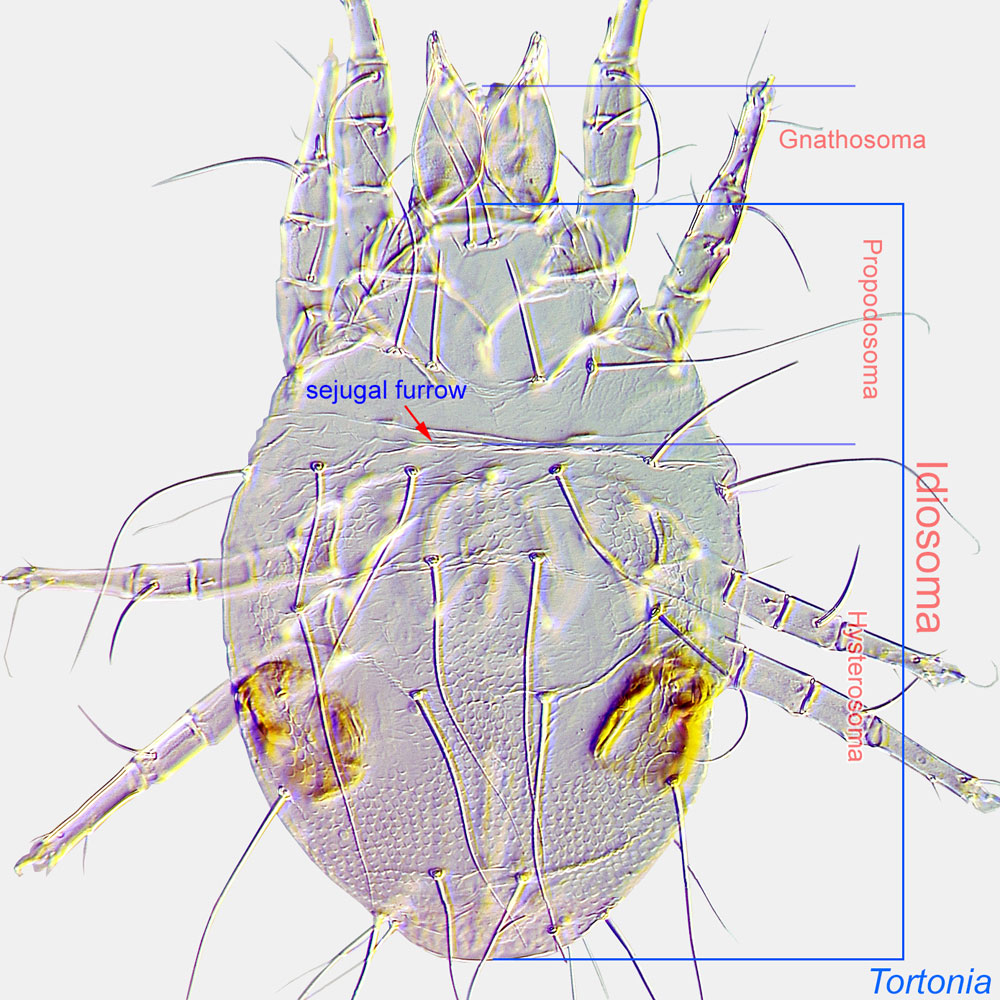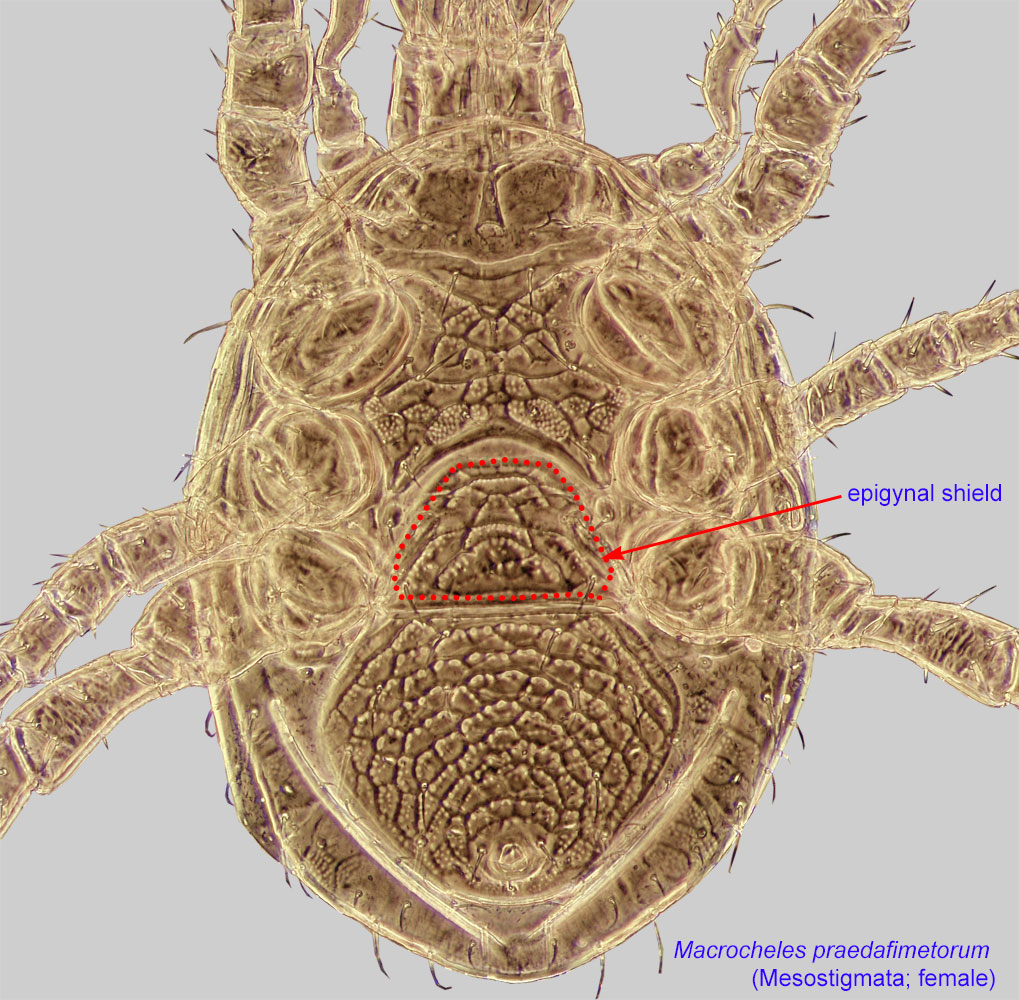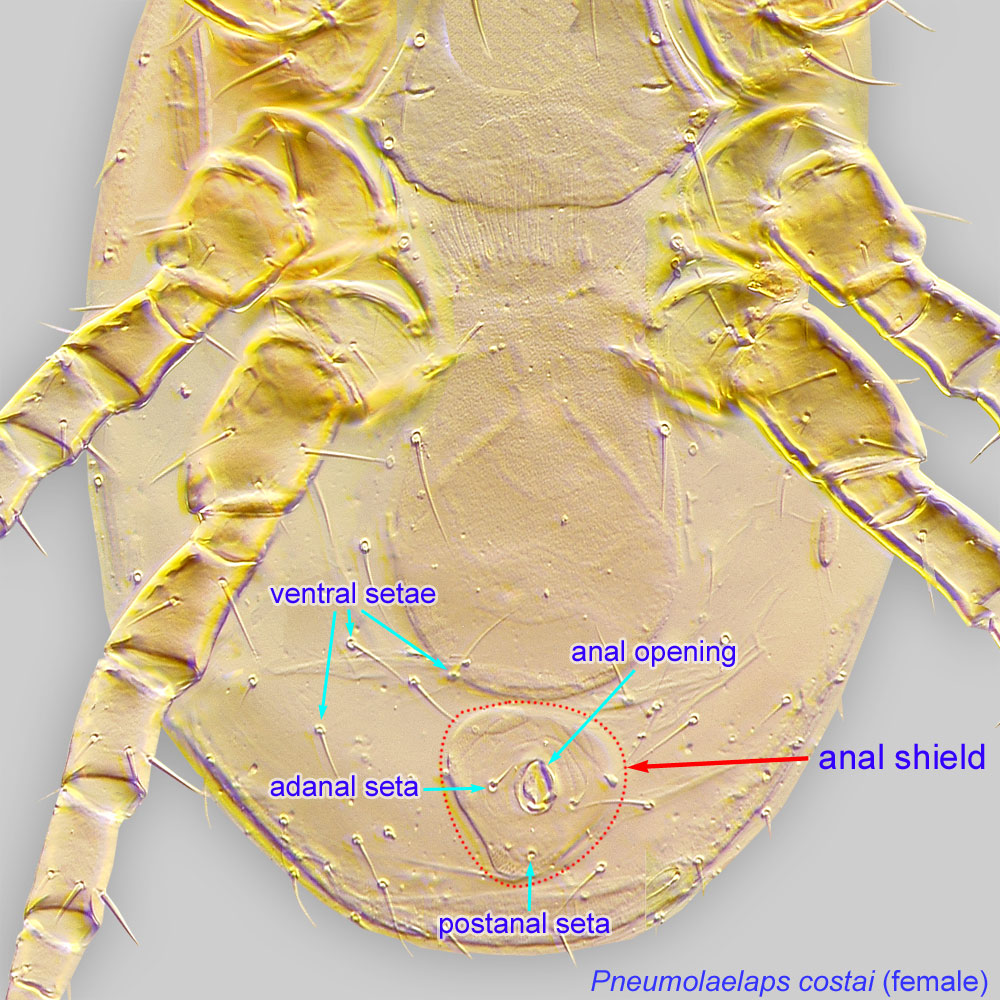probably beneficial; feeds on various mites and probably other microarthropods in bee nests
Neohypoaspis Delfinado-Baker, Baker et Roubik, 1983
Superorder Parasitiformes » Order Mesostigmata » Suborder Monogynaspida » Hyporder Dermanyssiae » Family Laelapidae » Genus Neohypoaspis
Neohypoaspis ampliseta Delfinado-Baker, Baker et Roubik, 1983
Female: Some marginal setae of idiosomaidiosoma:
Body not including the gnathosoma.
 and legs with rounded or spatulate ends (Fig. 2). Epigynal shieldepigynal shield:
and legs with rounded or spatulate ends (Fig. 2). Epigynal shieldepigynal shield:
A shield protecting the female genital opening. Well-developed in Mesostigmata. Also known as epigynial shield.
 not enlarged; distance between epigynal and anal shieldsanal shield:
not enlarged; distance between epigynal and anal shieldsanal shield:
In Mesostigmata, a ventral shield bearing the anal opening and circumanal setae (adanal or postanal setae), but without any ventral setae or pores (lyrifissures) on it. If ventral setae are present on shield than referred to as a ventrianal shield.
 large; shields distinctly separated from each other (Fig. 2).
large; shields distinctly separated from each other (Fig. 2).
Male: Genitoventral and anal shieldsanal shield:
In Mesostigmata, a ventral shield bearing the anal opening and circumanal setae (adanal or postanal setae), but without any ventral setae or pores (lyrifissures) on it. If ventral setae are present on shield than referred to as a ventrianal shield.
 separate.
separate.
This genus includes only a single species, Neohypoaspis ampliseta.
The presence of rounded ends in some marginal idiosomal setae and legs is similar to the genus Eumellitiphis. See the Diagnosis section to distinguish the genera Neohypoaspis and Eumellitiphis.
Neotropical region
necrophagous (corpse- or decaying flesh-feediing) species of the stingless bee Trigona (Meliponini), for example, Trigona hypogea and Trigona fulviventris
permanentpermanent:
associated exclusively with bees or their close relative, wasps; cannot live without these hosts
Neohypoaspis ampliseta is associated with nests of necrophagous species of the stingless bee genus Trigona (Meliponini) in the Neotropics. These mites have been found in the outer sheath of the nest, typically at the base of the nest, often in areas the bees do not reach because of the small passageways connecting them. Large populations of mites (in the thousands) develop in the nest. This species is probably beneficial as it feeds on various mites (and probably other microarthropods) in the nest. Under laboratory conditions, it consumes astigmatid mites (Delfinado-Baker et al., 1983Delfinado-Baker et al., 1983:
Delfinado-Baker, M., E. W. Baker amp; D. W. Roubik. 1983. A new genus and species of Hypoaspidinae (Acari: Laelapidae) from nests of stingless bees. International Journal of Acarology . 9 : 195-203.).